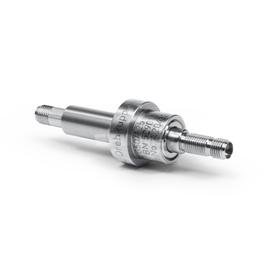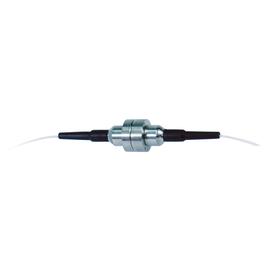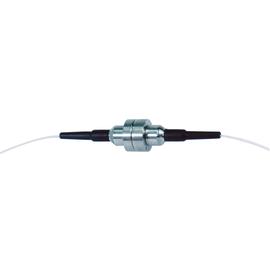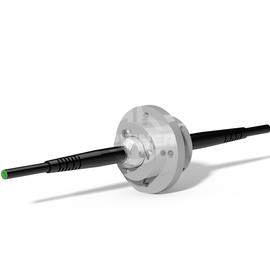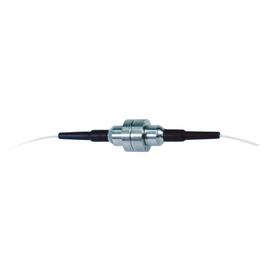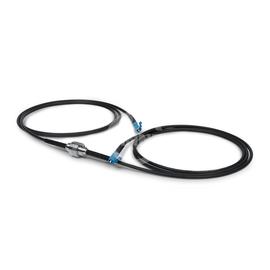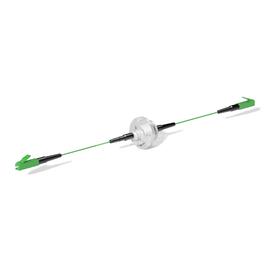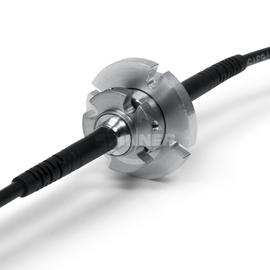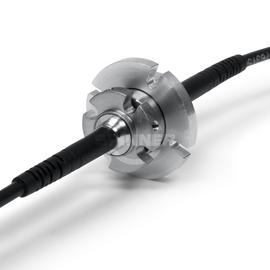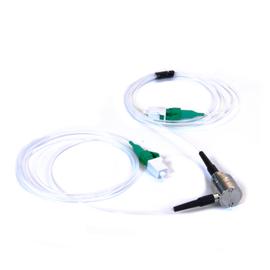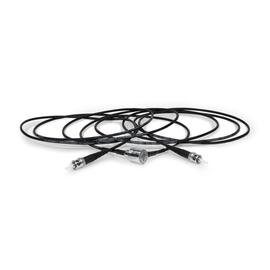Mobile cranes – rotary joints are a crucial component for transmission of power and signals
Mobile cranes for construction sites, road works and other heavy lifting requirements, typically transmit several types of data and information to support their safe and efficient operation. Here are some examples:
- Load weight: Mobile cranes use load cells and sensors to measure the weight of the load being lifted, which is transmitted to the crane operator through a display or gauge. This information is critical for ensuring that the crane is not overloaded, which could cause it to tip over or fail.
- Crane positioning: Some mobile cranes are equipped with GPS or other positioning systems that transmit location data to the crane operator or to a central control system. This information can help ensure that the crane is properly positioned for the lift, and can also be used for tracking and monitoring purposes.
- Crane status and diagnostics: Modern mobile cranes may have sensors and onboard computers that monitor various aspects of the crane's performance, including engine temperature, hydraulic pressure, and other parameters. This data can be transmitted to the crane operator or to maintenance personnel for analysis and troubleshooting.
- Video feeds: Some mobile cranes may be equipped with cameras or other sensors that provide a live video feed of the lift area, which can be transmitted to the crane operator or to a central control system. This information can be useful for ensuring that the load is properly positioned and for identifying potential hazards.
Overall, the data and information transmitted by mobile cranes is designed to support safe and efficient operation, while also providing real-time feedback on the crane's performance and status.
In order to transmit signals through rotating elements of a crane, such as the cable reel, boom or jib, special slip rings are often used. Slip rings are devices that allow electrical signals and power to be transferred between stationary and rotating components. They consist of two main parts: a stationary brush assembly and a rotating ring assembly.
There are several alternatives to slip rings that can be used to transmit signals and power through rotating elements of a crane. One alternative is contactless rotary joints, which use wireless or optical technology to transfer data and power across the rotating joint.
Here are some examples of contactless rotary joints:
- Wireless power transfer (WPT): WPT technology uses magnetic fields to transfer power wirelessly across a small gap between a stationary coil and a rotating coil. This technology can be used to power small electronic devices in the rotating part of the crane.
- Fiber optic rotary joints (FORJ): FORJ technology uses optical fibers to transmit data across a rotating joint. The optical fibers are connected to a stationary connector that transmits the data to the crane's control system.
- Inductive rotary joints: Inductive rotary joints use electromagnetic induction to transfer power and data across a rotating joint. These joints can be used to power motors and other electrical devices in the rotating part of the crane.
- Capacitive rotary joints: Capacitive rotary joints use capacitive coupling to transfer power and data across a rotating joint. These joints can be used to power sensors and other low-power devices in the rotating part of the crane.
Each of these technologies has its own advantages and disadvantages, and the choice of technology depends on the specific application and requirements of the crane. For example, wireless power transfer may be suitable for powering small devices, but may not be able to provide enough power for larger motors. Similarly, fiber optic rotary joints may provide high-speed data transfer, but may be more expensive than other options.
Key success factors for implementing a rotary joint in a mobile crane
Implementing a rotary joint in a mobile crane requires careful consideration of several factors to ensure that the joint functions reliably and safely. Here are some key success factors to consider when implementing a rotary joint in a mobile crane:
- Performance requirements: The rotary joint must be designed to meet the specific performance requirements of the crane, including data transfer rates, power requirements, and environmental conditions. The joint must be able to operate in the range of temperatures, humidity, and other environmental factors that the crane will be exposed to.
- Safety: The rotary joint must be designed to ensure safe operation of the crane. This includes ensuring that the joint does not introduce any additional risk of electrical shock or other hazards to crane operators or maintenance personnel. The joint must also be designed to prevent any signal or power loss that could cause the crane to malfunction or fail.
- Reliability: The rotary joint must be designed to operate reliably over the lifespan of the crane. This includes selecting high-quality components that are designed to withstand the stresses of rotating operation, as well as designing the joint to be easily maintainable and serviceable.
- Cost: The cost of implementing a rotary joint in a mobile crane can be significant, so it is important to consider the cost-benefit analysis of the joint. The benefits of the joint must outweigh the costs, and the joint must provide a competitive advantage to the crane in terms of performance and reliability.
- Integration: The rotary joint must be designed to integrate seamlessly with the other systems and components of the crane, including sensors, control systems, and other electrical devices. The joint must be designed to be compatible with the communication protocols used in the crane's control system, and must not introduce any interference or other issues that could affect the operation of the crane.
By considering these factors and carefully designing and testing the rotary joint, a mobile crane can benefit from improved performance, reliability, and safety.
The rotary joint allows for continuous transfer of electrical power and signals
Rotary joints are a crucial component for transmission of power and signals in mobile cranes. The primary function of a rotary joint in a cable reel, rotating elements of the jib or boom is to enable the transfer of electrical power, control signals, and other types of data and information from the fixed power source and control system to the rotating cable reel drum or the crane machinery.
The rotary joint consists of a stationary part (stator) and a rotating part (rotor). As the cable reel drum, jib or boom rotates, the rotary joint allows for continuous transfer of electrical power and signals from the fixed power source and control system to the crane machinery without any interruption. This continuous transfer of power and signals ensures that the crane can operate efficiently and safely.
There are several key requirements that must be considered when designing and selecting rotary joints for cable reels used in mobile cranes. These requirements include:
- High performance: SPINNER rotary joints offer low insertion loss or excellent VSWR (Voltage Standing Wave Ratio) performance, ensuring reliable transfer of electrical power, radiofrequency or optical signals with minimal power loss or signal distortion.
- Durability and reliability: SPINNER rotary joints are designed and manufactured to withstand harsh environmental conditions, which includes exposure to dust, moisture, saltwater corrosion in marine environments or high temperatures, and frequent use, ensuring reliable and long-lasting performance. They are designed to withstand the constant rotation of the cable reel drum and the stresses associated with crane operation.
- Minimal maintenance requirements: SPINNER rotary joints require minimal maintenance and are designed for easy repair and replacement, reducing downtime and maintenance costs.
- Wide range of options: SPINNER offers a wide range of rotary joint options, including different sizes, frequencies, technologies and (rf, fiber optics, Ethernet, …) and power handling capabilities, allowing for greater customization and flexibility in design.
- Integration with automation systems: SPINNER rotary joints can be integrated with automation systems for remote monitoring and control, allowing for more efficient and streamlined operations.
SPINNER rotary joints offer several advantages, including a wider range of options, higher electrical performance, and better durability and reliability. Additionally, SPINNER's focus on customization and flexibility allows for more tailored solutions to meet the specific needs of cranes on construction sites, road works.
